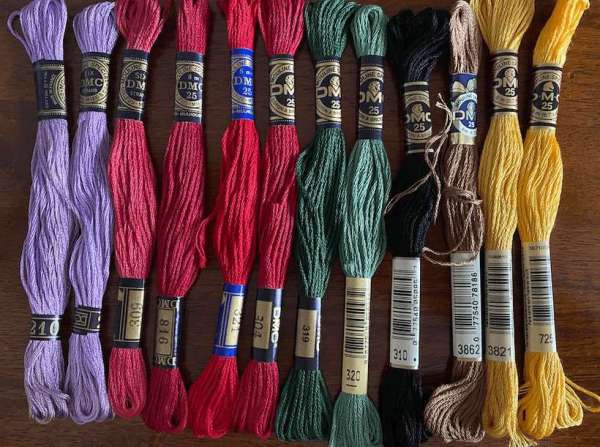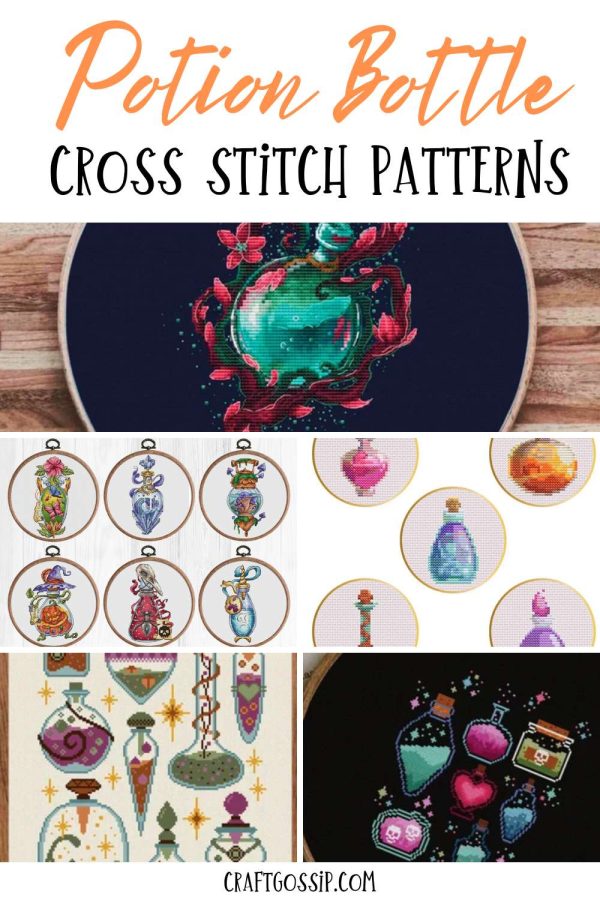 Not too long ago I cleaned up my cross-stitch floss (which was desperately needed, I assure you) and it got me wondering about the age of some of the threads in there.
Not too long ago I cleaned up my cross-stitch floss (which was desperately needed, I assure you) and it got me wondering about the age of some of the threads in there.
I’m not a consistent cross-stitcher by any means, so I assume some of the thread might be from when I first picked up the craft in junior high or high school. Some will date to each time I picked up the craft again in the intervening 25 years or so since I left home.
In general I don’t think it matters to me how old my thread is, but I know some people are curious about how old their thread might be if, say, they purchased it at a garage sale. You might also be stitching a vintage project or finishing a project someone else started and want to try to use thread that would be contemporary to the design.
Lord Libidan has a great post with a lot of pictures all about how to estimate the age of DMC floss based on the label. For example, the oldest DMC threads were sold as spools, and the oldest skeins of floss, which were produced beginning in 1910, were 7 yards long instead of the 8.6 yards used today. (It was an update to the metric system, where 8.6 yards is equivalent to 8 meters).
The post talks about and shows in photos where applicable the different ways the wrap labels have looked and what information is on them so if you have these wrappers you can estimate how old your floss is. Check out the post at Lord Libidan for all the details.
You might also wonder if it matters if you use old floss or combine old and new floss in a pattern. From what I’ve read there’s not necessarily a degradation in quality from using old floss, but it’s a good idea not to mix really old floss and new floss in the same project because they will look quite different because of the differing dye methods or treatments that might have been done to the floss in different production eras. Also of course dye lots will be different so even if you have the same color from different eras it’s unlikely to match perfectly.
[Photo: form tyrsa on Reddit via Lord Libidan]
 There are so many fun ways you can go when stitching Halloween cross stitch patterns or giving your place a slightly spooky or witchy vibe any time of year. I love the look of little potion bottles, whether they’re real bottles lined up on the mantle or shelf or cross stitched versions like these.
There are so many fun ways you can go when stitching Halloween cross stitch patterns or giving your place a slightly spooky or witchy vibe any time of year. I love the look of little potion bottles, whether they’re real bottles lined up on the mantle or shelf or cross stitched versions like these.
My mom had a notions store where she sold fabric, thread, zippers, and embroidery floss ect in the early 60’s until 1966. All her supplies were carefully packed away in layers of tissue paper. After she passed I kept all her old embroidery floss – over 500 DMC threads of various color and have finally got into the thread to see how sturdy they were. Believe it or not they are still very strong, do not fray and stay intake when washed. I still say they made things sturdier back in the day! The fabric she had in the store – now considered vintage will simply not rip even after washing and drying a few times! I use the fabric for my journals and stuffing amigurumi animals. Thanks for the interesting article.
Agree that the old stuff was made better! Thanks for sharing!